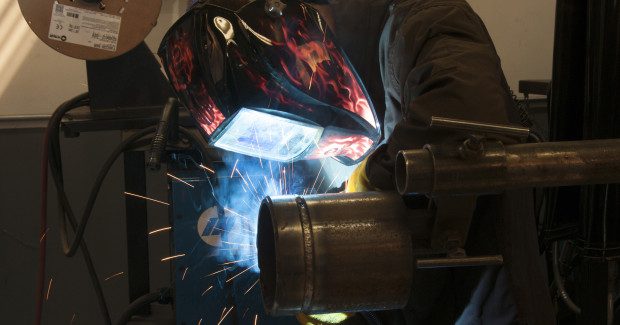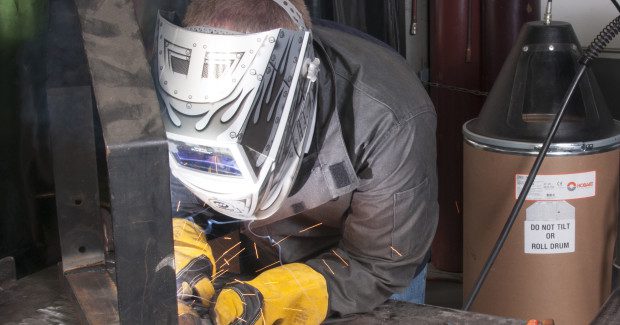What’s New with Filler Metals?
Filler metals reflect how welding operations are evolving, as materials change to meet application demands that require technologies capable of meeting more specific — and sometimes more stringent — welding requirements.
Posted: April 29, 2015
As industries evolve, welding operations must necessarily respond. Changing materials and application demands, for example, require technologies capable of meeting more specific — and sometimes more stringent — welding requirements. The lack of skilled welding operators also poses a challenge to the welding process as companies try to produce more with less labor in order to remain competitive. Companies are driven to look for solutions to help maintain a high level of productivity, while still keeping costs to a minimum.
Filler metals are one reflection of industry trends occurring today. Filler metal manufacturers continue to introduce products into the marketplace to help companies maintain pace with changes and address challenges — from welding wires offering improved mechanical and chemical properties to ones capable of producing results more efficiently and at higher welding speeds, and more.
THE NEED FOR LOW HYDROGEN LEVELS
Many industries, such as pipeline construction, heavy equipment manufacturing and offshore fabrication, are moving toward the use of higher strength materials. These materials (typically classified as being greater than 70 ksi) provide the necessary properties to be used for service in climates with extreme temperatures. While beneficial to the applications at hand, higher strength materials are also prone to hydrogen assisted cracking, making low hydrogen filler metals an increasingly popular — and necessary — choice. For quality and warranty purposes, some material manufacturers are also requiring low hydrogen filler metals for applications using their steels. This requirement serves as additional protection against cracking, even if a material doesn’t possess properties that make it exceptionally prone to this defect.
https://youtu.be/kNRS6zA8Jkk
Low hydrogen filler metals are those classified as providing less than 8 ml of diffusible hydrogen per 100 g of weldment, identified by an American Welding Society (AWS) designation of H8, but more commonly demands are for H4 products with 4 ml of diffusible hydrogen. Filler metal manufacturers typically offer solid, flux-cored and metal-cored wires in low hydrogen varieties. Formulations for flux-cored wires, in particular, have undergone advancement in recent years, improving their weldability while still offering low hydrogen properties. Some stick electrodes are also available with an H4 designation, although with the increased desire for high productivity levels, many companies choose to forgo the use of this filler metal due to the frequent changeover needs and stub loss.
In addition to standard low hydrogen filler metals, seamless flux-cored and metal-cored wires with low hydrogen designations have also become available in the marketplace. The absence of a seam on the surface of the wire eliminates the opportunity for drawing lubricant (which contains hydrocarbons) to become trapped and thereby reduces the chance of hydrogen entering the weld pool and causing cracking.
OPTIONS FOR A CLEANER WELDING ENVIRONMENT
Today, companies are increasing efforts to establish and maintain cleaner, safer welding operations. This trend has resulted from both increased regulations and from a desire to provide a better work environment to employees. With the shortage of skilled welding operators facing the industry, having a cleaner work environment can also serve as a means to attract and retain employees.
At a federal level, Occupational Safety and Health Administration (OSHA) regulations currently allow a ) recommended by the American Conference of Governmental Industrial permissible exposure limit (PEL) of 5 milligrams per cubic meter of air as a ceiling limit for manganese; state requirements can vary. The threshold limit value (TLV) recommended by the American Conference of Governmental Industrial Hygienists (ACGIH) for manganese is 0.02 milligrams per cubic meter of air as an 8-hour time-weighted average. Many Canadian provinces have adopted the ACGIH limit as their occupational exposure limit for manganese.
Based on these regulations and recommendations, some companies seek to modify their welding process (the first step in OSHA’s Hierarchy of Controls) by turning toward low manganese flux-cored and metal-cored wires as part of that solution. These wires generate manganese levels up to 70 percent lower than standard filler metals and some are also available with low diffusible hydrogen levels to minimize cracking risks that could jeopardize quality. In some instances, companies may pair a low manganese wire with other weld fume management solutions, such as source capture (or fume extraction systems, the second step in OSHA’s) and/or personal protective equipment (PPE, the final step in OSHA’s Hierarchy of Controls) such as a half mask or powered air purifying respirator (PAPR).
Every company’s needs vary, and weld fume management solutions should be determined through proper air sampling with the help of a certified industrial hygienist.
IMPROVED IMPACT TOUGHNESS
Changes in the oil and gas industry, specifically the need for new energy sources, are bringing forth an increasing need for filler metals with greater impact toughness properties — the ability to plastically deform and absorb energy before fracturing under rapidly applied stress.
As an example, offshore platforms for drilling are being built further out in the ocean, in deeper and colder waters than ever before. Similarly, pipelines are being constructed in more remote areas, including throughout China and Russia, where temperatures can be very low. Filler metals for such structures can withstand impacts ranging from 50 joules to 70 joules at temperatures as low as -60 deg C (-76 deg F), or lower in some cases. These filler metals typically contain 1 percent nickel or less because too high of a nickel content can cause a reaction with the hydrogen sulfite found in oil and gas, which can result in corrosion of the weld and base material. An added benefit of these filler metals is that they also help reduce cracking risks associated with the loss of toughness that steels experience at sub-zero temperatures.
ADVANCEMENTS IN TUBULAR WIRES
While not new, metal-cored wire is becoming an increasingly viable choice for improving quality and welding for many companies, including those in the automotive industry. With the push to build lighter-weight vehicles capable of greater gas mileage (54.5 mph average) by model year 2025 — based on Corporate Average Fuel Economy (CAFE) regulations, the U.S. Department of Transportation and the U.S. Environmental Production Agency (EPA) — many automotive OEMs are turning to the use of galvanized steel. This material provides high strength and corrosion resistance at thinner gauges, allowing for weight reduction in vehicles. It can be used for frames, engine cradles, suspension links and even auto body skins.
Galvanized steel poses a challenge to the welding process, however, due to the protective layer of zinc oxide on the surface. It can be welded with solid wires, but must be done so at a slower rate to prevent subsurface porosity. This can lead to lower productivity and also the possibility of burn-through due to higher heat inputs. Newer metal-cored wires, specifically those bearing an American Welding Society (AWS) classification of E70C-GS, weld efficiently on galvanized steel when paired with a power source providing pulsed welding. The wire/pulsing combination provides softer arc penetration to prevent burn-through on thin-gauged galvanized steel; generates an improved penetration profile; and can effectively weld through the galvanized zinc coating, minimizing surface and subsurface porosity.
Metal-cored wires can also offer good results in heavy equipment manufacturing and similar markets, where higher deposition rates and faster travel speeds are required to improve productivity on thicker materials.
CONCLUSIONS
In today’s industrial marketplace, the drive to remain competitive is very real. Companies are continually looking for ways to improve quality and productivity, while also reducing costs. In some cases, striving for improvements means changing the welding process and using a different filler metal. As trends change throughout fabrication, manufacturing and construction markets, and newer materials surface, it’s likely that such conversions will continue.






